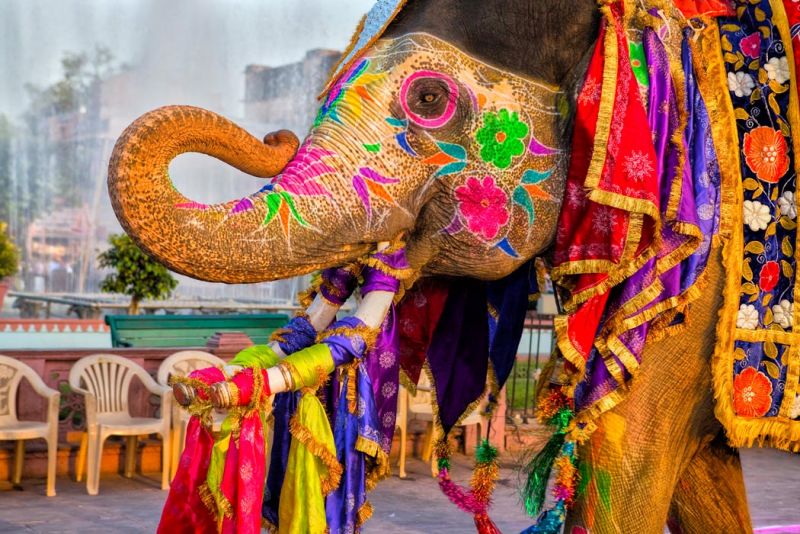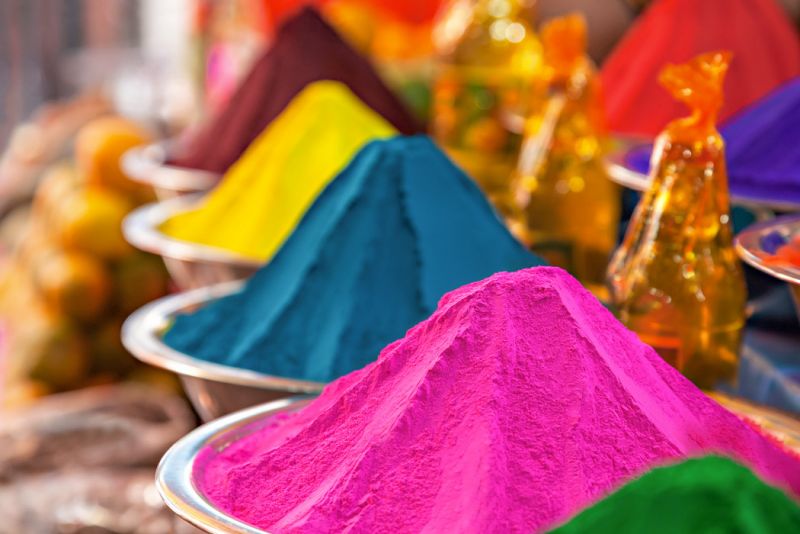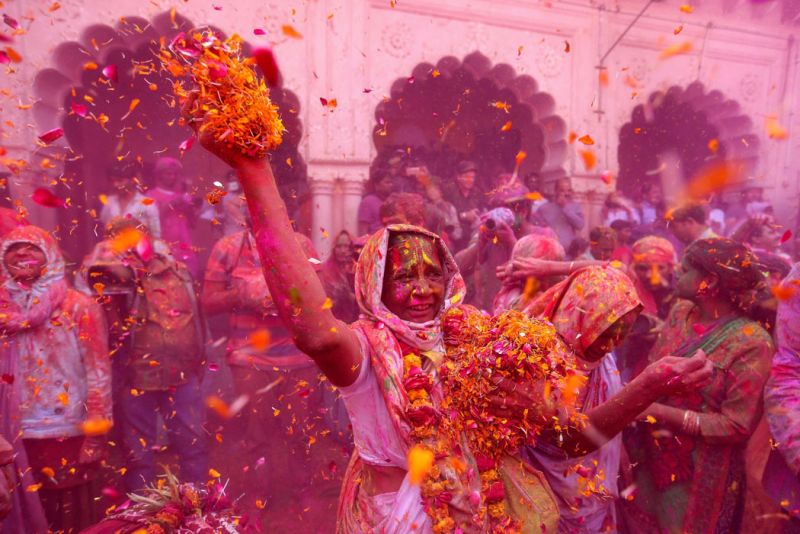Holi Festival in India
India is famous for a myriad of festivals, with the Holi festival being among its most popular and rightly so. Being a time to let loose and enjoy a frenzy of color splash and getting drenched, the Holi festival definitely ignites much mirth in the hearts of many.
Dating back to the 4th century, Holi is a Hindu festival that ushers in the spring season. It happens on the last day of the full moon on the Hindu lunar calendar, in the month of Phalguna, which falls in either February or March. This year’s national holiday falls on March 10. The eve of Holi ushers in the celebrations with the symbolic Holika Dahan celebrations.

Tip: Trips To India is a great way to enjoy exceptional Indian Festivals
The Holi Festival Legends
Holi is deeply founded on Hindu mythology, with several legends being associated with the festival. The most popular of the legendary accounts is that involving the demoness, Holika, on whose account Holika Dahan is celebrated. She was the aunt of Prahlada, who was devoted to the Hindu god, Vishnu. Prahlada’s father was a demon king by the name Hinyakashyap. Holika and Hiranyakashyap were not pleased with Prahlada’s devotion to Vishnu since his father wanted Prahlada to worship him instead. Nonetheless, Prahlada would not yield to their demands, prompting them to hatch a plan of killing him. Holika is said to have attempted to drag Prahlada into a bonfire while on her lap with the aim of having him burnt while she would escape unhurt owing to the protective shawl she wore. However, Prahlada emerged from the fire unhurt, thanks to his devotion to Vishnu, while Holika burnt to death after the shawl flew away from her.
To symbolize this major defeat over evil by good, the night before Holi is characterized by lit bonfires after sunset, illustrating the burning of Holika. A special “puja” (worship ritual) is conducted whereby people sing and dance as they walk around the fire three times. In the Saras village in Gujarat, people go the extra mile of walking across the blazing coals of fire! The fire-walking is considered sacred since it is done by local priests, who are considered as an incarnation of Prahlada.
The second Holi tradition involving the color frenzy is entrenched in the story of the Hindu god, Krishna. It is said that while courting the Hindu goddess, Radha, Krishna would smear colored powder onto her face because he found her complexion too fair. He would also mischievously throw flowers and colored water onto the “gopis”, the female cow herders. Krishna’s actions inspired the famous practice of “playing Holi”, where revelers engage in playful color-spreading.

The festivities on ground
In relation to the mythologies, the major themes in Holi festivals are the bonfires on the eve of Holi followed by the festivities on the Holi day. The merry-making is characterized by people throwing “gulal” (colored powder) and spraying water on one another. Others take the fun a notch higher by dancing under sprinklers.
Dol Jatra celebrations, which are similar to Holi, are done in places like Odisha and West Bengal. Nonetheless, the mythology is slightly different since the theme is majored on god Krishna’s love to the goddess, Radha. Temples get to be beautifully decorated as idols of Krishna and Radha are placed on swings in decorated palanquins where devotees push the swings while singing devotional songs of Holi.
Gujiyas and sweets get to be shared during the Holi festivities as families and friends visit one another. Traditional foods also spice up the menu, including “bhang thandai”, a cannabis-infused drink that is popular with the festivities. The revelers get to enjoy a legal occasional high that comes with the celebrations. In some parts of India, Holi is celebrated as a thanksgiving festival for an abundant season of harvest.

Heading for the Holi fun?
Holi celebrations are normally on the highest gear in Northern India in cities such as New Delhi, Udaipur, Jaipur, Mumbai and the holy city of Mathura, which is the epicenter of the celebrations. Krishna is believed to have grown up in Mathura. Its streets literally overflow with crowds during the spectacular processions which last an entire week. Music, dance, plays, and color are the order of the week.
In the town of Barsana, which is near Mathura, a unique event known as “Lathmaar Holi” takes place. It is inspired by the story of the women cow herders chasing Krishna away for throwing color and water on them. The townswomen pretend to be chasing and hitting the men with “lathis”, or sticks, as the men run to the nearby town of Nandgaon, where the same event is taking place with women chasing the men to Barsana. There is nothing to fret about this merry chasing since it is all fun and nothing to get hurt about.
The festivities in major places in Northern India commence six days before the Holi event, on Phagu Dashami. If planning to join in the fun, it is best to plan your trip at least one week before the Holi festival. Be sure to purchase the traditional gifts which are exchanged during the festivities such as the Gujiyas, sweets as well as the “bhang thandai”.

Securing your fun
Owing to the color mania, you might want to carry clothes which you don’t mind staining. Some of the colors do not wash out easily. You may also go the extra mile of protecting your skin using coconut oil as some of the colors may cause irritation.
Ladies planning to take part in the festivities are advised to do so in groups since inebriated young Indian lads tend to take advantage of the situation. Cases of inappropriate handling and aggressiveness on oblivious lonesome ladies have been reported. Therefore, proper care is vital to enhance safety even as the celebrations rave on. If planning to be out in the streets during the Holi frenzy, early mornings are the best times.
You can then return to your hotel before the afternoon sets in when the men are mostly inebriated.
Luckily, many hotels host special Holi celebrations for their guests in a well-secured environment. While you may not know from which direction colored powder and water may land on your face, you definitely don’t want it landing on your mouth and eyes. Protect yourself and have fun!
